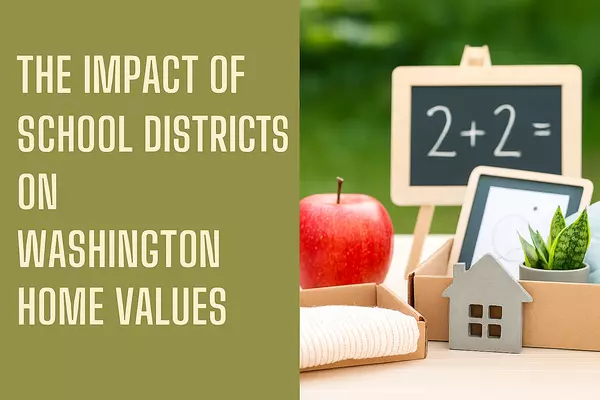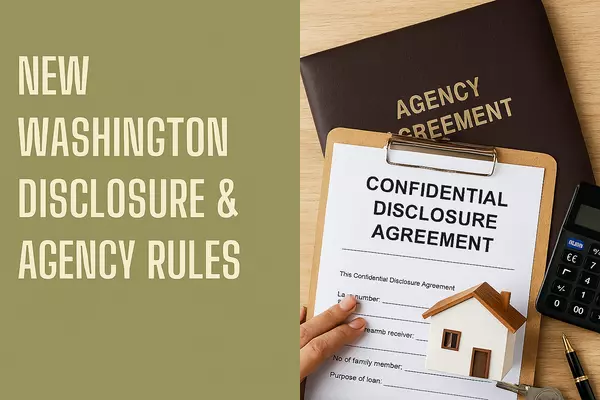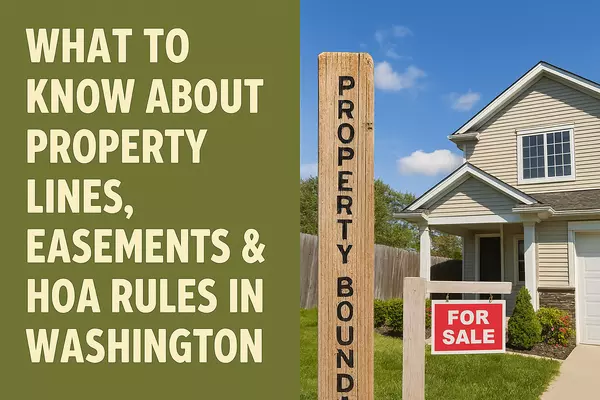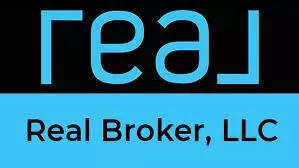The Impact of School Districts on Washington Home Values

The Impact of School Districts on Washington Home Values
When buyers start searching for homes in Washington, one factor consistently rises to the top: school districts. Even for buyers without kids, school quality can significantly influence long-term property value, neighborhood stability, and overall demand.
Here’s a breakdown of how school districts impact Washington home values — and what to consider before making a move.
1. Why School Districts Matter More Than Many Buyers Realize
A strong school district creates something every homeowner wants: built-in demand.
In Washington, areas like Bellevue, Lake Washington, Northshore, and Mercer Island often see higher home prices and faster appreciation because families compete for limited inventory inside those boundaries.
Even if you don’t plan on using the local schools, your future buyers might — which means a stronger resale position.
If you’re weighing school quality against your budget, check out my post on How Condos Compare to Single-Family Homes for First-Time Buyers to see how different property types perform in high-demand districts.
2. The Price Premium: How Much More Do Homes Cost in Top Districts?
Homes in well-rated school districts can sell for 5–20% more than similar homes in neighboring areas with lower-rated schools.
This premium comes from:
-
Strong competition among families
-
Lower turnover rate and tighter inventory
-
Consistent demand, even in slower markets
-
Better long-term appreciation
But remember — a higher price doesn’t always mean a better deal. You’re also paying for stability, resale strength, and desirability.
For more on evaluating whether a home is truly priced correctly, see my blog on How to Read a Home Inspection Report — especially important in competitive school-driven markets.
3. Don’t Forget About Commute, Community, and Lifestyle
School districts are important, but they aren’t everything. Many Washington buyers ultimately choose neighborhoods based on:
-
Shorter commute times
-
Walkability and amenities
-
Outdoor recreation
-
Community culture
-
Home size and layout
If you’re researching neighborhoods, my post What Makes a Community Truly Family-Friendly? breaks down the non-negotiables that many buyers overlook.
4. Boundary Changes: The Hidden Risk Buyers Don’t Consider
Washington school districts revise boundaries regularly — especially in fast-growing cities like Bothell, Redmond, and Maple Valley.
When boundaries shift, home values can shift with them.
This is where working with a local Realtor matters. I track local district updates, new school construction plans, and rezoning discussions so you aren’t caught off guard by future changes.
5. Should You Stretch Your Budget for a Better School District?
It depends on your long-term goals. In general:
Stretching your budget makes sense if you:
✔️ Plan to stay 5–10+ years
✔️ Want stable property values
✔️ Expect to resell to another family
✔️ Prefer predictable demand and low inventory turnover
It may not be worth it if you:
✖️ Are buying a temporary home
✖️ Prioritize lifestyle or commute over district boundaries
✖️ Want more home for the money in an emerging area
If you’re thinking about upsizing or downsizing, this pairs well with my recent blog Smart Strategies for Downsizing Your Home After a Big Life Change — many people switch districts during life transitions.
6. Final Thoughts: School Districts Are an Investment, Not Just a Feature
The school district you buy into can affect:
-
Your home’s appreciation
-
Future buyer demand
-
Price stability during market shifts
-
Your overall return on the property
Even if you don’t have school-aged children, choosing the right district can strengthen your long-term financial position.
Thinking About Buying in a Specific District?
I help buyers compare neighborhoods, schools, and long-term value across the entire Puget Sound region.
Have questions about a district or want to tour homes in your preferred area?
👉 Contact Me.
Recent Posts











